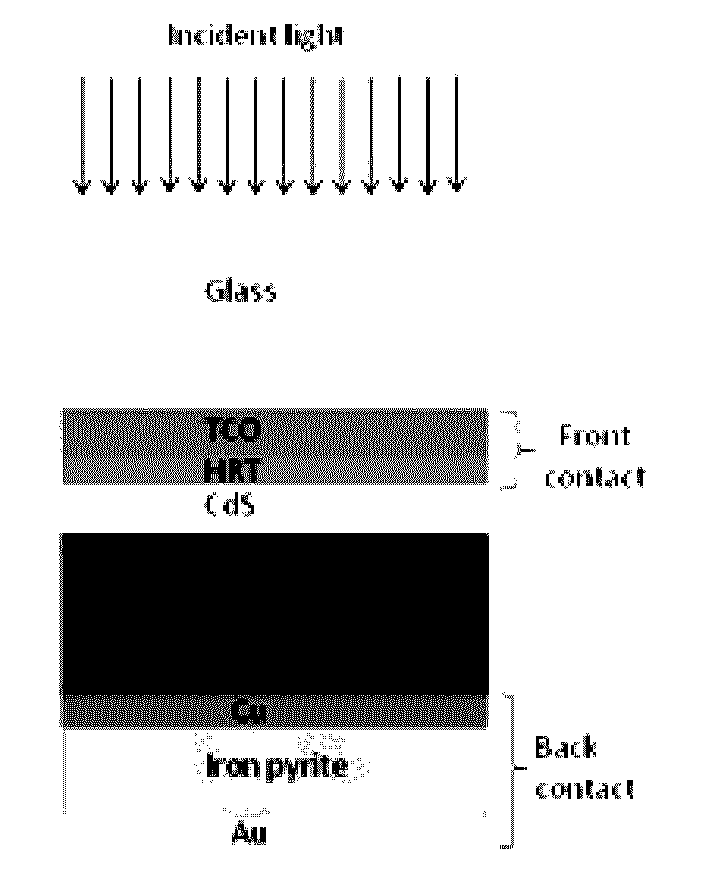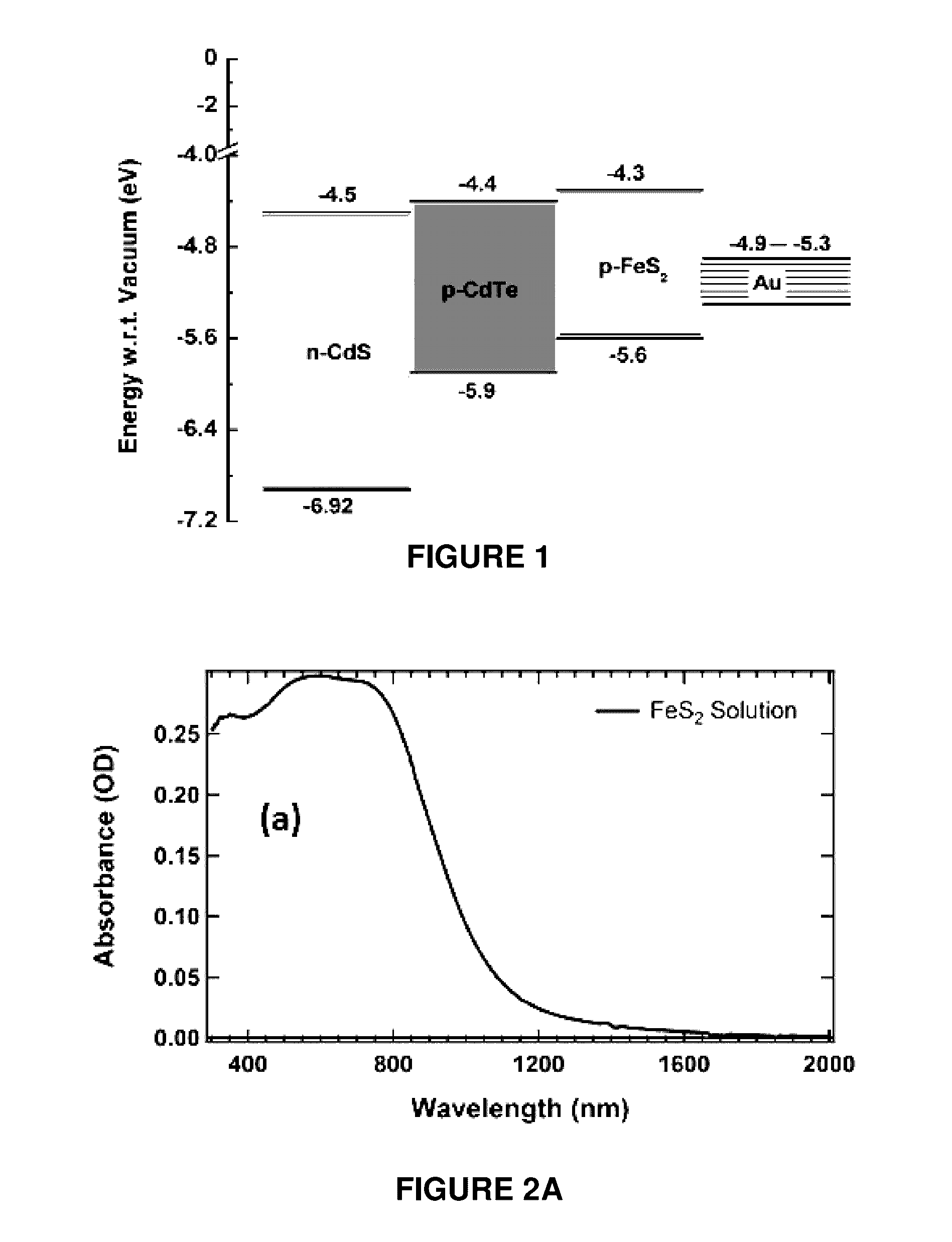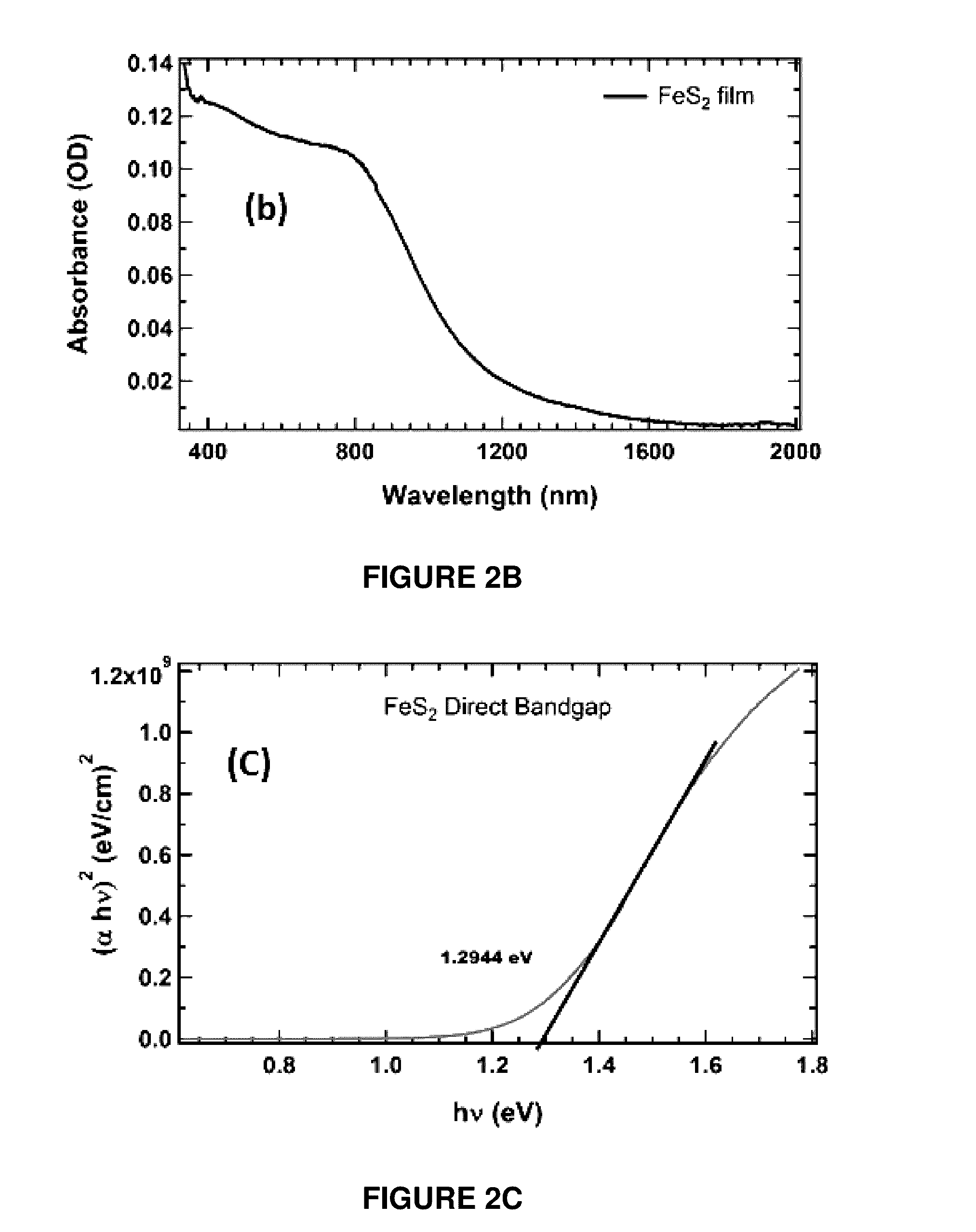Iron Pyrite Nanocrystal Film As A Copper-Free Back Contact For Polycrystalline CdTe Thin Film Solar Cells
- Summary
- Abstract
- Description
- Claims
- Application Information
AI Technical Summary
Benefits of technology
Problems solved by technology
Method used
Image
Examples
Embodiment Construction
)
[0046]In a first aspect, there is provided herein an iron pyrite (iron persulfide, FeS2) nanocrystal-based thin film low barrier back contact to CdTe solar cells. While the semiconductor layers are described in the context of CdS and CdTe layers, other materials may be used. For example, the various semiconductor active layers may alternatively be formed from CIGS (copper indium zinc gallium di-selenide), CZTS (copper zinc tin sulfide), CZTSSe (copper zinc tin sulfur selenium alloy), tin sulfide, and copper antimony sulfide. In one embodiment, the FeS2-based back contact can be applied to the cell without pre-treatment of the CdTe p-type film. Creating a low-barrier, ohmic back contact to CdTe often involves addressing both the high work function and the low resistivity of the thin film. Standard back contact preparation often introduces copper, as a thin evaporated layer or as a CuCl2 solution deposition, followed by thermally-assisted diffusion to create a low-resistivity CuxTe p...
PUM
 Login to View More
Login to View More Abstract
Description
Claims
Application Information
 Login to View More
Login to View More - R&D
- Intellectual Property
- Life Sciences
- Materials
- Tech Scout
- Unparalleled Data Quality
- Higher Quality Content
- 60% Fewer Hallucinations
Browse by: Latest US Patents, China's latest patents, Technical Efficacy Thesaurus, Application Domain, Technology Topic, Popular Technical Reports.
© 2025 PatSnap. All rights reserved.Legal|Privacy policy|Modern Slavery Act Transparency Statement|Sitemap|About US| Contact US: help@patsnap.com



